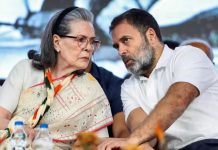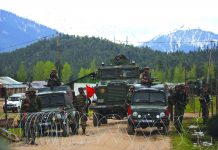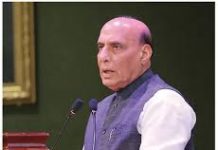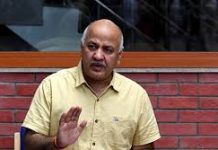Perhaps the reason why the Uphaar case stands out as an example in comparison to other recent cases like the Jessica Lall murder and the BMW hit-and-run, in which witnesses succumbed to money and muscle power. Parts of the protracted 10-year-long battle, in fact, resembles a keen game of chess, each side trying to outwit the other. When the families did not succumb, the Ansals got caught out for what even the judge termed serious — the tampering with court records. Crucial documents that clearly established the Ansals’ links to Uphaar — they had pleaded that they had nothing to do with the day-to-day running of the theatre after 1988 — were either missing or had been distorted.
If several adjournments made the victims’ families despair, this development lifted their spirits. It was easy to sink into the lows. Tears were always on stand-by. Exasperation forever ready to tear at the mask which the families wore for the world outside. Dang often returned to his room, where his wife’s photograph is still decorated with five fresh roses every morning — red roses, because she liked them. Neelam was forever ready to spend time in her children’s room where the bedspread lies untouched because that’s what they slept on before they left. Revisiting the world they once shared helped. Dang says he could fight because he faced up to the past, unlike his brother who did not even want to be reminded. Neelam did it by not giving up on being a mother only because her children were dead.
Don’t be fooled by the tears. It didn’t dent AVUT’s determination to see their mission to a logical conclusion. The tears helped — it gave them that ultimate strength that is born from the depths of emotional despair.
Justice. That’s what the families reminded themselves and each other of. Importantly, as Tulsi said, “When we formed the Association, we knew we couldn’t bring the children back. It was not a condolence body. It was formed to improve the observance of safety norms.” The struggle was not just about getting the Ansals and errant government departments to pay up. That battle was won some years ago, but it wasn’t just money they were fighting for. Ask Tulsi and he will tell you this. “Yes, there were tough moments. The Association was quibbling and getting torn, but they never lost sight of the ultimate goal. Coughing up Rs 10 crore as compensation for a businessman worth Rs 500 crore means nothing. A rich man is scared of nothing other than the prospect of going to jail.”
AVUT dug out the impossible. They took on different roles. Sometimes, they worked like lawyers — referring to the IPC and the CrPC to look for interpretations.At other times, they doubled as sleuths and went about the task of finding documents from the Registrar of Companies. At times, they went undercover to cull information from the vast Ansal empire itself. They knew they had touched a high when they laid their hands on a critical document — an affidavit bearing Sushil Ansal’s signature. The affidavit had been sent to the DCP Licensing in 1992. This nailed the lie that the Ansals had relinquished charge as directors of Uphaar in 1988.
AVUT ALSO realised the importance of keeping the issue alive. This realisation came early on in the battle and in the very first year of its inception, the members decided to have a seminar or a discussion on the thirteenth of every month. So, even as they fought the protracted battle in court, the reminder that 59 innocents had died was always there in the dailies and on television channels. There may be some sense of disappointment with the trial court’s judgement, angst that the Ansals have only been found guilty of causing a rash and negligent act and not of culpable homicide, but ask the families again and they will tell you that it is a victory. That the word “convict” will be the Ansals’ prefix. That for the first time, the ordinary have been able to make the mighty feel the heat.
Ask Dang and he will say, “Our strength is that we stayed together as a family.’’ Ask Rita Sawhney and she says she has got some solace at last. Ask Tulsi, and he says, “I am satisfied because we have achieved what we set out to do. The case has contributed to the development of jurisprudence. The powerful know now that they too can be booked and government departments will think twice before issuing false safety certificates. Neelam and Shekhar’s mission made the difference between success and defeat.”
Ask Neelam and Shekhar, who gave up their business, to plunge into battle, and after years, they will smile and say, “The fight is not over yet, but we can now go home and face the children.” The road doesn’t end here for AVUT. It’s ultimate aim is to transform itself into an Association for the Victims of Mass Tragedy.
[box]
 The Krishnamoorthys
The Krishnamoorthys
Garment exporters
Led the campaign after losing their two children. Went through 45,000 pages of documents and 1,200 hearings. Want a wing of the Trauma Centre, for which the government has paid Rs 55 crore, to be dedicated to the victims
 Harish Dang
Harish Dang
Businessman
Lost five members including his wife, son, two nieces and a nephew. Unlike his brother, who doesn’t want to be reminded of the tragedy, Dang says he is a fighter and wants to see safety awareness grow
 ML Sehgal
ML Sehgal
Project officer, IIT Delhi
Gave his son Rs 250 because ‘it was my birthday’. Lost his son that day – June 13 — and joined the battle for justice. Now has another date to celebrate — November 22. The day a powerful lobby like the Ansals were convicted
[/box]













